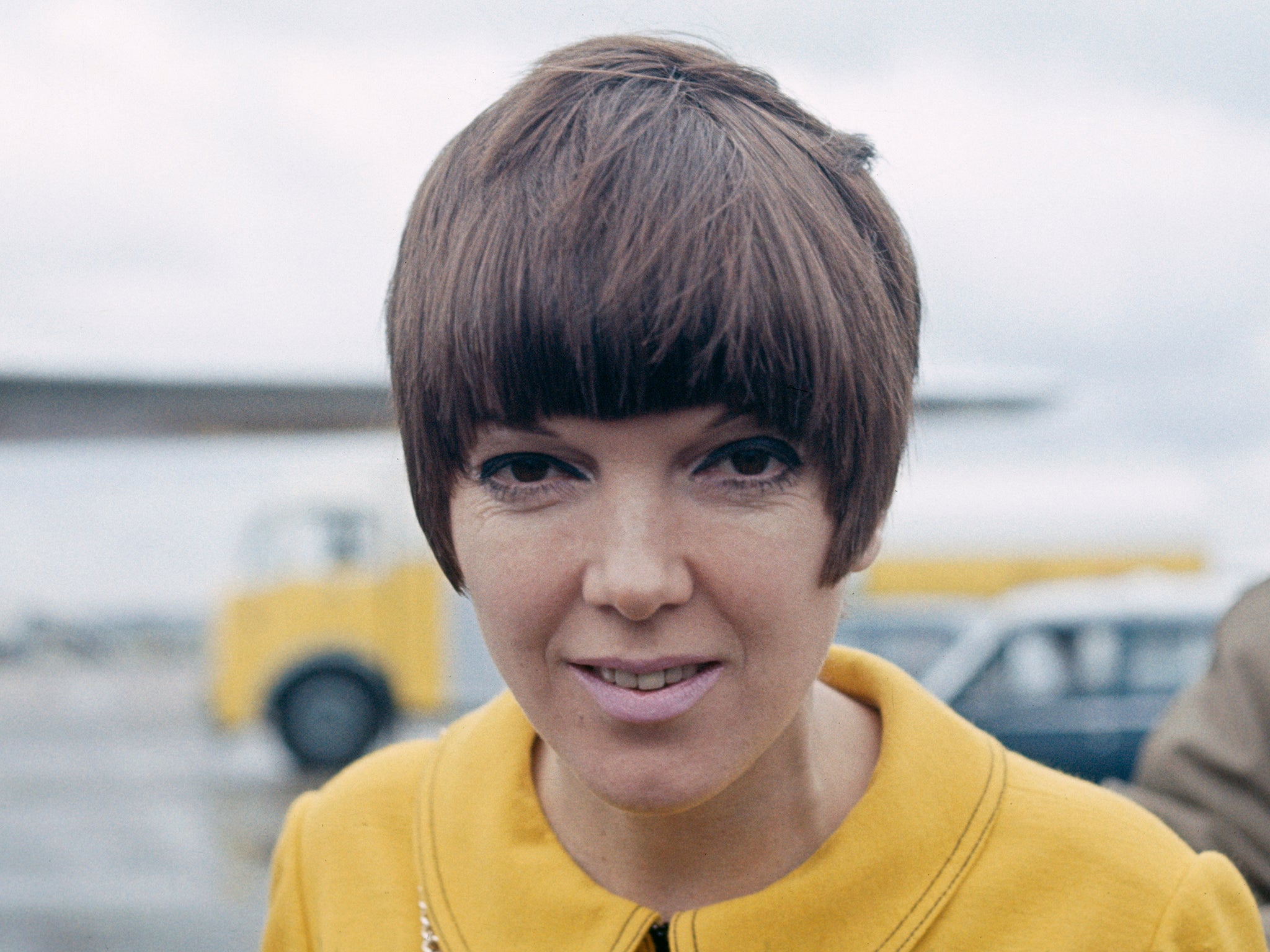
Fashion designer Mary Quant, who is widely credited for inventing the miniskirt and pioneering Swinging Sixties style, has died aged 93.
Her clothes were popularised by famous faces including model Jean Shrimpton, photographer and model Pattie Boyd, Cilla Black and Twiggy.
“Mary Quant was such an influence on young girls in the late 50s early 60s,” Twiggy posted on Instagram. “She revolutionised fashion and was a brilliant female entrepreneur. The 1960s would have never been the same without her.”
Among her many achievements, Quant pioneered the high hemlines that became popular during a decade of cultural and social revolution in the UK.
The official Twitter account of the Victoria & Albert Museum, which recently hosted an exhibition about Quant’s designs, shared a tribute that said it was “hard to overstate” the impact Quant had had on the fashion world.
“She represented the joyful freedom of 1960s fashion, and provided a new role model for young women,” the statement said. “Fashion today owes so much to her trailblazing vision.”
Designer and TV presenter Esme Young said: “She designed things for the women who wanted to wear them, and she was a big influence on a lot of designers – a really big influence.
She added: “I absolutely think she did liberate women. She put it out there, and we were all influenced by that. It felt like freedom – ‘I can have a miniskirt and I can wear whatever colour tights I want and you can piss off.’ It was about women. And I know some men might say it was sexual, but I don’t believe that. I believe it was a way of women expressing themselves and having freedom.”
Alexandra Shulman, former editor-in-chief of British Vogue, also paid tribute to the late fashion designer, writing on Twitter: “RIP Dame Mary Quant. A leader of fashion but also in female entrepreneurship – a visionary who was much more than a great haircut.”
Author Linda Grant added: “She was to fashion in the sixties what the Beatles were to music. Changed everything from hemlines, silhouette and makeup.”

A statement issued by her family on Thursday (13 April) said Quant had “died peacefully at home in Surrey, UK this morning”.
It continued: “Dame Mary, aged 93, was one of the most internationally recognised fashion designers of the 20th century and an outstanding innovator of the Swinging Sixties.”
Quant was born in Blackheath, south London, and was the daughter of Welsh school teachers. She studied illustration at Goldsmiths, University of London, where she met her husband, Alexander Plunket Greene.
After graduating, she secured an apprenticeship as a milliner. In 1955, when her husband opened a boutique on the ground floor of a building he had bought, Quant focused on designing clothes that were then sold in the shop.
She was a self-taught designer and attended evening classes on pattern-cutting to achieve the innovative looks she envisioned.

Quant strived to create “relaxed clothes suited to the actions of normal life”. With their wearable yet flattering silhouettes and hemlines, Quant’s clothes became extremely popular.
She went on to design both women’s and men’s clothing, playing with the proportions of the body and taking inspiration from earlier eras.

The designer is often credited for inventing the basis of the decade’s most iconic look, the timeless classic known as the miniskirt. Short skirts and shift dresses then became Quant’s trademark, with high-profile models, such as Twiggy, frequently seen wearing her designs.
In 2014, Quant, who named the skirt after her favourite make of car, recalled its “feeling of freedom and liberation”.
She said: “It was the girls on King’s Road who invented the mini. I was making clothes which would let you run and dance, and we would make them the length the customer wanted.
“I wore them very short, and the customers would say ‘Shorter, shorter.’”
Other items Quant sold included knitwear, swimwear, accessories and garments made using Butterick patterns, Peter Pan collars, and the “dangerously short” micro-miniskirt, along with “paint box” make-up and plastic raincoats.
By the end of the Sixties, she had three shops and was the UK’s highest-profile designer.

In 1988, she designed the interior of her beloved Mini 1000 car.
She resigned as director of Mary Quant Ltd, her cosmetic company, 12 years later after a Japanese buyout, and there were soon more than 200 Mary Quant Colour shops in Japan.
In 2014, she was made a dame for services to British fashion in the Queen’s new year honours list.

She said at the time: “I am absolutely delighted to have been awarded this terrific honour. It is extremely gratifying that my work in the fashion industry has been recognised and acknowledged in such a significant way.”
In 2021, actor and film producer Sadie Frost made a fashion documentary about the designer, titled Quant. Contributions to the biographical film came from prominent figures in the world of fashion including supermodel Kate Moss, designer Dame Vivienne Westwood, beauty entrepreneur and make-up artist Charlotte Tilbury, designer Jasper Conran, and designer Dame Zandra Rhodes.
Frost said Quant had “changed the whole kind of female silhouette” and that she had stopped women from dressing like their mothers by creating “free and daring” designs.
With additional reporting from PA.







